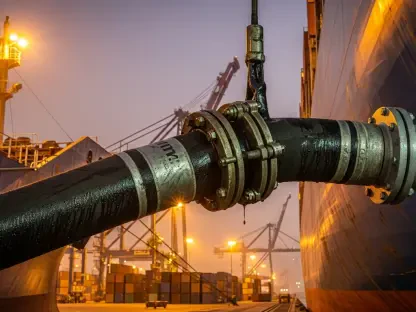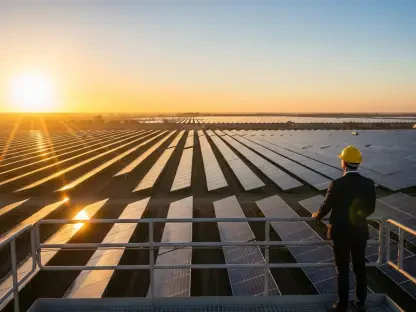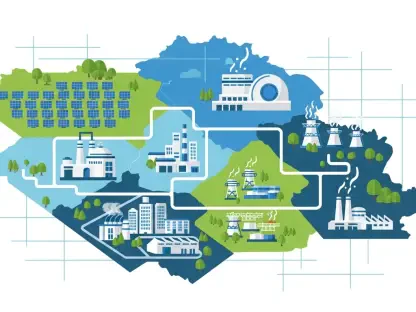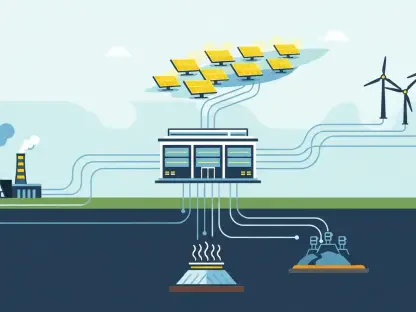Picture a world where every trip to the gas station stings a little more, where the cost of goods creeps higher without warning, and where these escalating expenses reflect broader economic and geopolitical currents. This is the reality unfolding as oil prices climb steadily, with Brent crude reaching $67.30 per barrel and U.S. West Texas Intermediate (WTI) crude hitting $63.21 per barrel. What forces are pushing these numbers upward, and how do they signal a complex interplay of robust demand and simmering global unrest? The surge demands a closer examination of the stakes involved.
The importance of this trend cannot be overstated. Rising oil prices are not just figures on a trader’s screen; they ripple through economies, impacting everything from household budgets to corporate bottom lines. With strong U.S. demand driving market confidence and escalating tensions in Ukraine adding uncertainty, understanding these dynamics is critical for consumers, businesses, and policymakers. This story delves into the heart of these developments, uncovering the reasons behind the price hikes and their far-reaching implications for energy security and global stability.
What’s Fueling the Current Surge in Oil Prices?
Recent weeks have seen a notable uptick in oil prices, marking gains for the second consecutive session. Brent crude futures rose by 0.7%, settling at $67.30 per barrel, while WTI crude futures climbed 0.8% to $63.21 per barrel. This momentum raises questions about whether it reflects a strengthening global economy or hints at deeper, more troubling disruptions on the horizon.
Market analysts point to a combination of immediate triggers behind this climb. A significant drawdown in U.S. crude inventories—down by 6 million barrels to 420.7 million barrels, against an expected drop of just 1.8 million barrels—has caught attention. Reported by the U.S. Energy Information Administration, this sharp decline underscores a demand surge in the world’s largest oil-consuming nation, setting a bullish tone for traders.
Beyond raw data, the undercurrent of global events adds fuel to the fire. Geopolitical friction, particularly tied to the Ukraine conflict, looms large over market sentiment. As these factors converge, they paint a picture of a market teetering between optimism over demand and anxiety over potential supply constraints, setting the stage for a deeper dive into their broader significance.
How Oil Prices Impact Everyday Life and Global Economies
The effects of climbing oil prices extend far beyond financial markets, touching the lives of ordinary people. For many, filling up a car becomes a more expensive errand, with fuel costs directly tied to these global shifts. This pinch at the pump serves as a reminder of how interconnected energy markets are to daily routines, influencing budgets in subtle yet persistent ways.
On a larger scale, businesses feel the strain as transportation and production costs rise. Industries reliant on oil, from manufacturing to logistics, face tighter margins, often passing these expenses on to consumers through higher prices for goods. This inflationary pressure can slow economic growth, making oil price trends a focal point for corporate leaders and economic planners monitoring market stability.
For governments, these fluctuations pose challenges to policy and planning. Energy security becomes a pressing concern, especially in regions dependent on imports, while the balance of trade and sanctions tied to oil-producing nations add layers of complexity. Against the backdrop of U.S. demand strength and Ukraine’s ongoing strife, these price movements signal a need for strategic responses to safeguard economic resilience.
Key Factors Behind the Oil Price Increase
A primary driver of the current price surge lies in the unexpected strength of U.S. demand. The dramatic reduction in crude inventories—6 million barrels lower than last week, totaling 420.7 million barrels—far outstripped forecasts of a 1.8 million barrel decline. This data, sourced from the U.S. Energy Information Administration, highlights a robust appetite for oil in a key market, pushing prices upward as supply tightens.
Geopolitical tensions further complicate the landscape, with the Ukraine conflict at the forefront. Russia’s firm stance against peace talks that exclude Moscow, combined with U.S. tariffs of 25% on Indian goods due to India’s reliance on Russian crude for 35% of its oil imports, injects uncertainty. Despite warnings, Russian officials maintain their commitment to supplying India, raising fears of tighter sanctions and potential disruptions in global oil flows.
These dual forces—demand-driven optimism and geopolitical risk—create a volatile mix. While U.S. consumption patterns offer a clear boost, the specter of international friction keeps markets on edge. Together, they illustrate a delicate balance where economic indicators and political maneuvers both play decisive roles in shaping oil valuations.
Expert Perspectives on Market Trends and Potential Risks
Industry analysts provide critical insights into the forces at play, offering a window into market sentiment. Daniel Hynes, senior commodity strategist at ANZ, emphasizes the confidence inspired by U.S. demand signals, noting that inventory drawdowns reflect a strong economic undercurrent. This perspective suggests a foundation for sustained price gains in the near term as consumption holds firm.
However, not all views are uniformly optimistic, as geopolitical clouds loom. Tamas Varga of PVM Oil Associates points out that uncertainties surrounding Ukraine and related sanctions fuel bullish trader sentiment, yet they also introduce fragility. The possibility of sudden shifts in policy or conflict escalation keeps the market wary, with prices sensitive to breaking news from the region.
Adding a note of caution, independent analyst Gaurav Sharma highlights potential downside risks. Should the Ukraine situation stabilize, a bearish turn could emerge, with Brent crude possibly testing a critical floor of $65 per barrel. This balanced range of expert opinions underscores the tightrope markets walk, caught between encouraging demand data and the unpredictability of global events.
Strategies for Stakeholders to Manage Oil Price Volatility
For consumers grappling with rising costs, staying informed is a vital first step. Monitoring fuel prices and adjusting household budgets to account for higher transportation expenses can help mitigate the impact. Small changes, like optimizing travel routes or exploring carpool options, may offer relief in the face of persistent price pressures.
Businesses dependent on energy face a more complex challenge, requiring proactive measures. Hedging against price spikes through futures contracts or diversifying supply chains to reduce reliance on volatile regions can provide stability. Companies might also consider investing in energy-efficient technologies to lower long-term costs, turning a challenge into an opportunity for innovation.
Policymakers, meanwhile, must weigh the broader implications of these market shifts. Assessing the impact of sanctions and trade policies, particularly involving major players like Russia and India, is essential. Crafting strategies that bolster domestic energy production or secure alternative import sources could shield economies from external shocks, ensuring a steadier path forward amid ongoing demand trends and geopolitical risks.
Reflecting on the Path Ahead
Looking back, the steady climb of oil prices reflected a delicate dance between robust U.S. demand and the shadow of Ukraine’s unrest. The sharp drop in inventories had signaled economic vigor, while geopolitical frictions had kept markets on edge, a duality that defined the period’s uncertainty. Each stakeholder, from consumers to policymakers, had felt the weight of these shifts in distinct yet interconnected ways.
As challenges mounted, the need for adaptive strategies had grown clear. Exploring renewable energy investments emerged as a promising avenue to reduce dependence on volatile oil markets over time. Building international coalitions to stabilize supply chains had also offered a potential buffer against sudden disruptions tied to global conflicts.
Ultimately, the era underscored a critical lesson: preparation was paramount. Encouraging dialogue among nations to address the ripple effects of sanctions and fostering innovation in energy alternatives paved a way toward resilience. These steps, taken with foresight, had aimed to transform uncertainty into a catalyst for sustainable progress in the years that followed.









